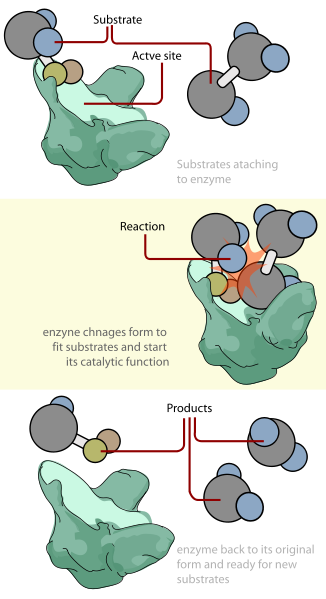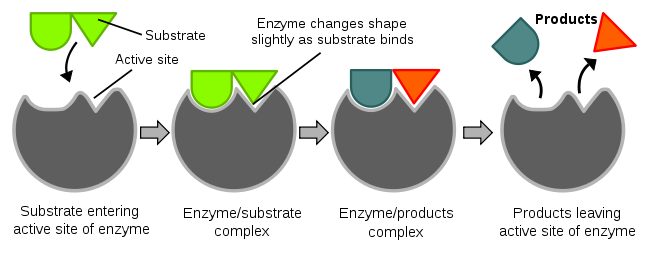The Induced Fit Model
The induced fit model describes how scientists think many enzymes catalyze chemical reactions. Whenever a substrate binds to the active site, the folded shape of the enzyme changes shape slightly, to bind the substrate more tightly. The enzyme tries to shift back to its original shape, which puts strain on chemical bonds in the substrate. These strained chemical bonds undergo chemical reaction more readily. Below are two descriptions of the induced fit model:

Figure 4. In this diagram, when the enzyme (green) and two substrates (one shown as a large grey sphere with two small blue spheres, a small yellow, and small orange sphere attached and one shown as two large grey spheres with 3 small blue spheres attached) bind there is a slight shift in the enzymes shape to confirm ideal binding. Once the enzyme-substrate complex is formed, it lowers the activation energy and catalyzes the reaction, represented by the orange star shape in the middle image. When the reaction is complete the enzyme shape shifts back therefore releasing the three products (two products are large grey spheres with two small blue spheres attached and one product is a large grey sphere with a small blue, yellow, and orange sphere attached).

Figure 5. In this diagram, when the enzyme (grey) and substrate (bright green) bind there is a slight shift in the enzymes shape to confirm ideal binding. Once the enzyme-substrate complex is formed, it lowers the activation energy and catalyzes the reaction. When the reaction is complete the enzyme shape shifts back therefore releasing the products (dark teal and orange).

